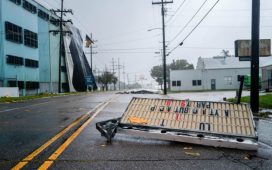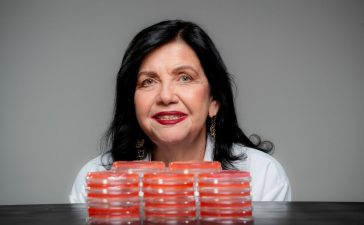Unlock the Editor’s Digest for free
Roula Khalaf, Editor of the FT, selects her favourite stories in this weekly newsletter.
Time was, the less you talked to your insurer, the better. Whether the product was auto, life, property or cyber security coverage, customers paid their premiums and hoped not to speak again until renewal time rolled around.
Insurers, meanwhile, were largely reactive. They focused on responding to claims and mostly used data to select customers and set pricing.
Now some companies are turning the equation on its head. No longer content with calculating risk and paying claims, they are interacting with customers, sometimes on a daily basis, to help minimise losses.
The shift, from “repair and replace” to “predict and prevent,” as insurers put it, has been made possible by technological advances. It also reflects a growing consensus that intervention ahead of time is not only cost-effective but necessary in the face of mounting expenses. If it takes hold, it could transform the way society approaches everything from cancer screening to natural disasters.
The protection industry has always been interested in minimising losses. The first insurance companies formed after the Great Fire of London employed watermen to help put out blazes, while insurance research on auto accidents helped drive child car seat mandates.
Today, more personalised approaches are possible. Auto insurers opened the door a decade ago, by offering lower premiums to customers who installed data recorders, known as telematics, in their cars to monitor their driving.
Since then, cheaper digital sensors and improved analytics have allowed insurers to step up from tracking to advice and even outright intervention. State Farm offers homeowners free smart plugs that constantly check for electrical faults. Chubb bought a company that makes leak detection systems and offers discounts to homeowners who install them.
Manulife first used fitness trackers to monitor customers of its John Hancock Vitality life insurance and reward them for physical activity with prizes as well as lower premiums. But its efforts to nudge customers towards longevity now run the gamut from discounts on fruits and vegetables, to cancer screening and whole-body MRI scans.
“We’re trying to move away from a business model that focuses on deaths and claims to one that focuses on helping people live longer, healthier lives,” Roy Gori, Manulife chief executive, told the recent FT Global Insurance Summit. Vitality customers are twice as likely to say they would recommend the programme.
Corporate insurers are also now helping clients identify and reduce risk. They hope this will take the sting out of rising premiums and generate consulting fees. Chubb sends inspectors armed with infrared cameras to commercial buildings to look for electrical system weaknesses. Zurich advises property owners on how to install rooftop solar panels to minimise future wind and fire damage. It also helps manufacturers guard against product liability claims by advising on quality control programmes.
The shift makes sense. Insurers are better placed than their customers to spot and prioritise potential problems, a task that is becoming more complicated as losses from extreme weather grow.
“Convincing companies that we should be their trusted risk partner is essential,” says Sierra Signorelli of Zurich. “We shouldn’t have every company everywhere trying to build models to understand the impact of climate change or learning lessons we’ve already learned many times over.”
Most customers are intrigued but not sold. Consultancy Bain surveyed consumers in 14 countries and found widespread interest in prevention services and rewards for healthy living. However, fewer than one in 10 had actually tried them.
For this to work, customers must trust their insurers, rather than fearing the companies will turn the shared information against them in the form of higher premiums. Anyone who has paid privately for car repairs rather than report a fender bender knows what I mean. Regulators also need to be alert for companies that cherry pick low-risk clients rather than working with those who face more challenges.
The potential benefits are huge. Inflation, supply chain issues and efforts to decarbonise are all driving up replacement costs for cars and property, and insurance only covered 31 per cent of losses from last year’s natural disasters. And life insurers could help fund preventive care that many health systems are struggling to deliver.
If customers really start thinking of insurers as their friends, the relationship could pay off handsomely for both sides.










